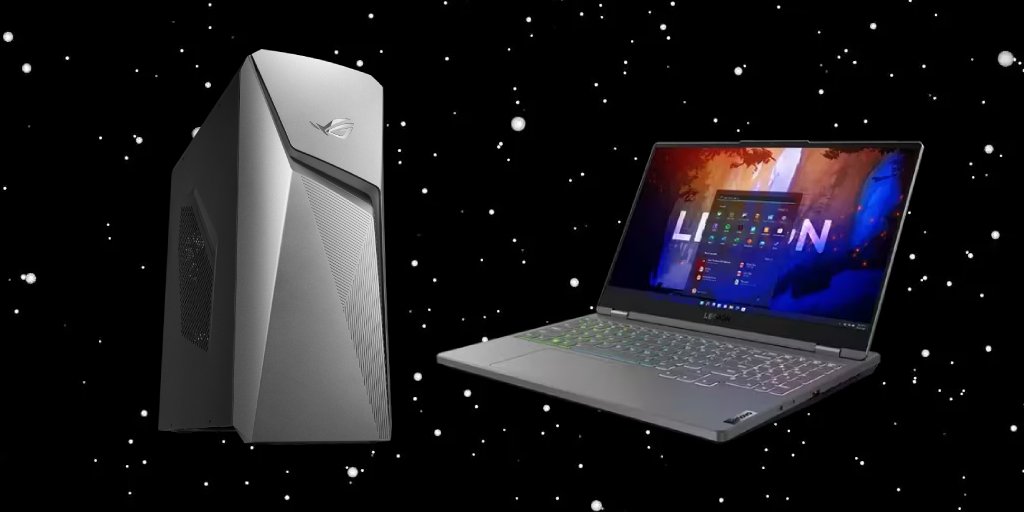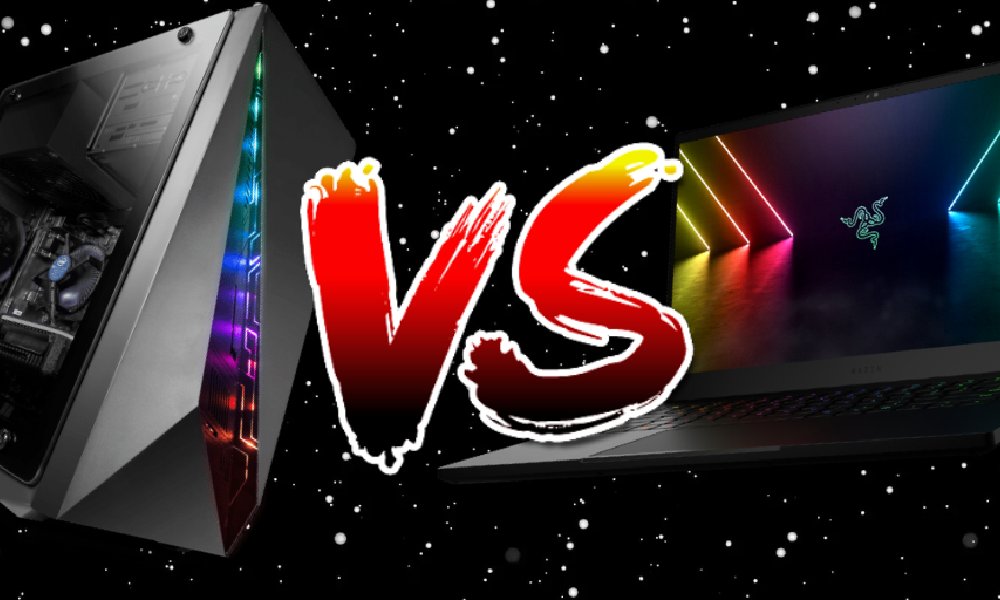In the ever-evolving world of gaming, the choice of hardware can make or break your gaming experience. Gamers today are faced with a pivotal decision: should they invest in a high-powered gaming PC or opt for the portability and convenience of a gaming laptop?
This debate has sparked countless discussions among gaming enthusiasts, each side passionately defending their choice. In this article, we’ll delve into the heart of the matter, exploring the strengths and weaknesses of gaming PCs and laptops, to help you make an informed decision that suits your gaming style and needs. Whether you’re seeking the ultimate performance or a versatile gaming rig, we’ll guide you through the factors to consider when deciding between these two gaming titans.
Table of Contents
Performance
An important factor to consider when deciding which gaming device is for you is the performance of these machines. “Performance” refers to how efficiently the device can run a video game at high settings, high resolutions, and respectable framerates. The performance of your device is mainly determined by what hardcore components it has from the CPU, the GPU, RAM, the kind of storage it has, the cooling system, and many more.
Now gaming PCs or desktops have always had an edge over gaming laptops. This is simply because a desktop PC can store or fit larger components that have better systems for cooling, and prevention of overheating, and throttling, and is simply more powerful. Take for example, an RTX 3060 for a desktop can easily outperform an RTX 3060 for a laptop in most video games.
However, gaming laptops are not inferior in performance. Thanks to the advancement of technology and innovations in recent years. The gap between the performances of these two devices is not as vast as most people might think they are. The vast majority of gaming laptops are essentially mobile versions of their desktop counterparts.
Today’s gaming laptops especially the higher-end ones have high refresh rates, very fast SSDs, and cooling systems so advanced that it feels like you’re touching ice. On the side-by-side comparison, you will discover for yourself just how small the performance gap truly is between these two types of machines.
Portability
The Portability is another important factor to consider when purchasing a gaming device. “Portability” simply means how easy it is not only to carry but to use in multiple locations. When you think of “portability” it is all about the size, batter life, durability, and the weight of the device. It is without question that gaming laptops win the portability category. A 15-inch 4k display with high refresh rates and powerful performance can weigh less than 3 pounds while a full-size desktop especially a tower desktop can easily weigh over 35 pounds (15+ kg).
Yes, there are small gaming desktops. Small enough to fit in a backpack but here’s what they do not have. A monitor, keyboard, mice, speakers, headset, camera, and more. Gaming laptops already have all of those. The bottom line is, if you are looking for a gaming device that is truly portability and potentially has the capability, especially at higher ends, choose a gaming laptop.
Hardware Upgrades
Hardware upgrades are simply the ability to add or replace any components within your device to improve performance or add additional functionality. It is all about your device having the compatibility, affordability, accessibility, and availability of components. Generally speaking, gaming PCs win over gaming laptops. Most desktops have the space to accommodate large components. It is one of the hallmarks of gaming on a desktop, the ability to swap, add, or upgrade any component with relative ease.
For example, with a desktop PC, you can easily replace its GPU from an RTX 3060 desktop GPU to an RTX 3070, or even higher whilst a gaming laptop simply cannot do that. However, this does not mean that gaming laptops cannot have their hardware upgraded or rather, supplemented. Though it will cost more, parts can be hard to find, and this makes the whole idea of “portability” kind of pointless.
Gaming laptops can easily have their RAM and storage upgraded but when it comes to their CPU or GPU. There is a way. They are called eGPUs which are full-size GPUs inserted into a graphics dock or an eternal GPU dock. The idea behind them is simple, You link the eGPU to one of your gaming laptop’s ports. It is similar to attaching a headphone to your smartphone or tablet.
When it comes down to it, both types of devices can be upgraded however a gaming laptop has a catch. You lose out on portability when you truly want to upgrade its performance but if money is not an issue for you. Simply purchasing the highest tier that is currently available can easily solve most of your problems even if you are a content creator or a 3D artist, most high-end gaming laptops are no pushovers.
Customization
The Customization is another factor for you to consider. Customization is having the ability to personalize or modify the appearance or functionality of your device to suit your style or needs. Customization is influenced by the accessories available, the features, the software, and the design of your device.
Both gaming PCs and gaming laptops have their kinds of strengths and weaknesses when it comes to customization. A gaming PC has more options, you can choose from hundreds if not thousands of different cases, RGB lighting, fans, cooling systems, overclocking, BIOS settings, and many more that can drastically change the look and performance of your PC. You want a computer that has a beautiful tempered glass case, with liquid cooling and incredible RGB lighting. You can easily do that with a desktop.
With gaming laptops however, you may not have the most aesthetically pleasing options available as most gaming laptops are either black or grey with sharp to modern designs but you do have the advantage of using multiple external features wherever you are. Nothing can beat the ability to take a respectable webcam and have a conference or Discord with friends whether you are in a cafe or your car. Not to mention you can easily set up multiple monitors, and multiple laptops with multiple different settings and systems.
The bottom line is that when it comes to aesthetics. PC desktops win. There are simply more options available for desktop users than laptop users but when it comes to functionality and software customization, nothing can beat a gaming laptop especially if it is touchscreen. You use it as a scanner, to draw on, to easily rotate 3D objects, zoom in and out of video timelines, and more.
Side-by-Side Comparison

To better illustrate the difference between gaming PCs and laptops, we will use two devices with similar components and cost roughly the same. Do note that components of each of these may change in the future but the components stated as examples are still perfect, to illustrate the differences between desktop-grade and laptop-grade components.
ROG Strix GL10DH from Asus, is a pre-built desktop gaming PC that features:
- AMD CPU: Ryzen 7 3700x
- Nvidia GPU: RTX 3060 desktop GPU
- RAM: 16 GB ddr4
- Storage: 512 GB SSD, 1 TB HDD
- Includes keyboard and mouse
Lenovo Legion 5, a gaming laptop with similar specs and cost that features:
- AMD CPU: Ryzen 7 3700x
- Nvidia GPU: RTX 3060 laptop GPU
- RAM: 16 GB ddr4
- Storage: 512 GB SSD
- Includes webcam and an onboard microphone
To give you a better idea of the differences, here is a quick and super simple benchmark in terms of GPU performance.
CPU Performance (Cinebench R23)
- ROG Strix GL10DH scores 11,624 points – desktop grade component
- Lenovo Legion 5 scores 11,050 points – laptop grade component
GPU Performance (3dMark Time Spy)
- ROG Strix GL10DH scores 9,873 points – desktop grade component
- Lenovo Legion 5 scores 8,410 points – laptop-grade component
We will not go into the differences in RAM performance as they are virtually identical and so is the storage. Virtually identical transfer rates. Some highs, some lows but essentially if you were editing a 10gb+ video project in Premiere Pro, the export time for a desktop gaming PC would be 30-90 seconds faster. When it comes to portability the Levono Legion 5 wins without question but when it comes to hardware upgrades and possible customization the ASUS’ Strix GL10DH wins.
Now, when it comes to gaming, the results are:
ASUS’ Rog Strix GL10DH performed an average of:
- 120+ FPS on Cyberpunk 2077 at High Settings (1080p resolution)
- 150+ FPS on Fortnite at Epic Settings (1080p resolution)
- 170+ FPS on Valorant at High Settings (1080p resolution)
- 180+ FPS on Minecraft at Fancy Settings (1080p resolution)
Lenovo Legion 5 performed an average of:
- 110+ FPS on Cyberpunk 2077 at High Settings (1080p resolution)
- 140+ FPS on Fortnite at Epic Settings (1080p resolution)
- 160+ FPS on Valorant at High Settings (1080p resolution)
- 170+ FPS on Minecraft at Fancy Settings (1080p resolution)
If you are looking into 2k gaming, expect a drop of 33-55% frames per second and higher on 4k so if you truly want to push your device to play Cyberpunk 2077 at 4k, you are looking at medium settings with DLSS turned on. You can refer to this benchmark video on YouTube for more information but to be clear, if you play at a steady 30+ fps, though “slow” it is very playable.
Cost of Gaming PC vs Laptops
Okay, to avoid getting too technical. Here is what you should know. The main difference between a desktop-grade computer versus a laptop-grade computer is the 25-50% difference in performance which if you choose a laptop means you are paying 25-50% more for the premium of ultra-portability.
For example, the VIII-17 ‘Gaming PC from Vibox is £955.00 that prominently features:
- Intel i9 11900F
- Nvidia RTX 3060 (desktop grade)
- 32GB of RAM (3200MHz, 2 x 16GB)
- 1TB NVMe M.2 SSD
The laptop equivalent of this is ASUS’ TUF Gaming F15 which has relatively the same components:
- Intel i7-11370H
- Nvidia RTX 3060 (laptop grade)
- 16GB of RAM (3200MHz)
- 1TV NVMe M.2 SSD
Though the performance of the RAM and storage are virtually identical, the capacity of the CPU and raw power of the GPU differ quite significantly. Again, without getting too technical, the difference is 25-50%, and depending on where you purchase the ASUS TUF laptop, it can retail for £1,099.99 or possibly 30-55% higher.
Conclusion: Gaming PC vs. Laptop – What is better?
In summary, which is better? Unfortunately, this is not as straightforward as it should be although it can boil down to two factors. If you ignore almost everything else but portability and cost. The answer is relatively straightforward.
If cost isn’t an issue for you and you want portability. You will pay a premium of 25-50% more and lose the same rate (more or less) on performance even at higher-end offerings. Purchase a gaming laptop.
If you want high performance, hardware upgradability, and flexibility. You will get high performance worth your money If you purchase a desktop gaming PC.
Also Read:
How To Choose The Best Tech Gadgets
The Best Small Business Software

